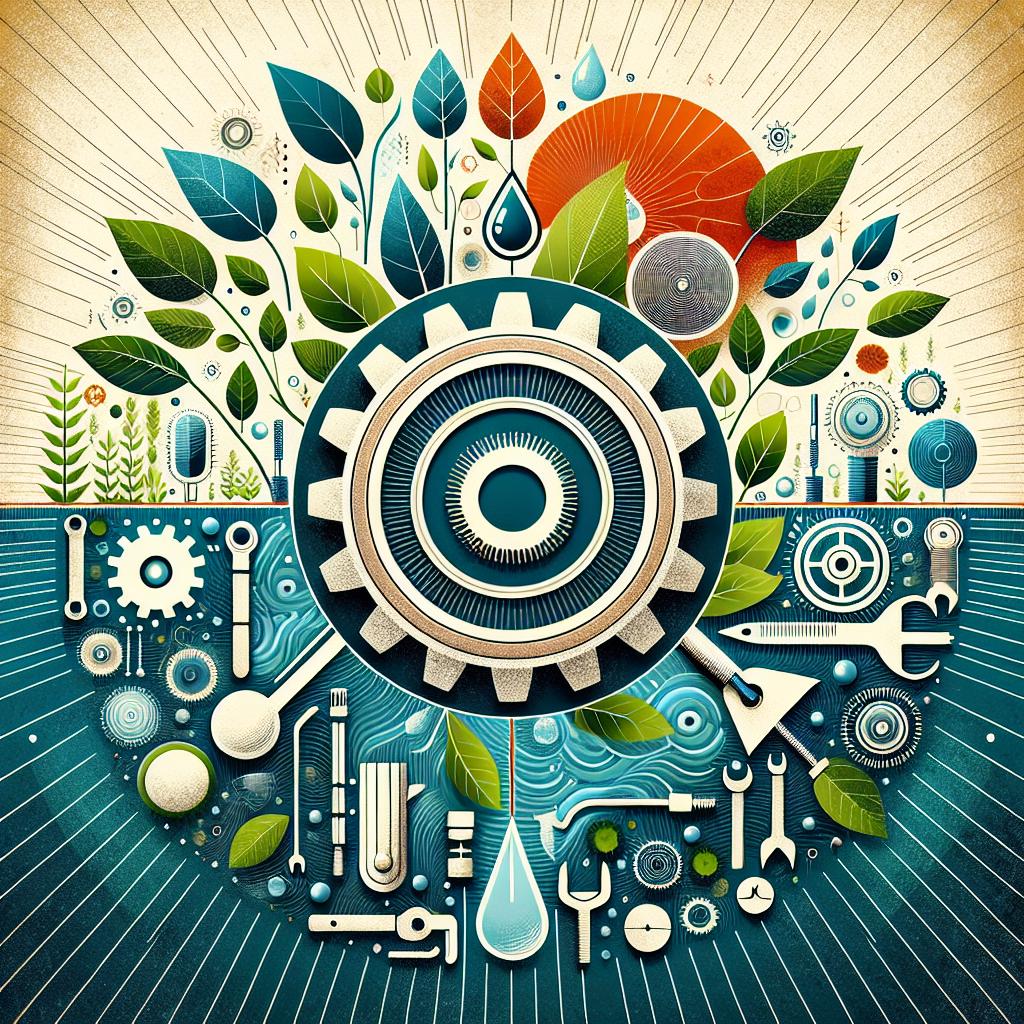This post may contain affiliate links which means I may receive a commission for purchases made through links. Learn more on my Private Policy page.
How to Choose the Right Sprinkler System for your Crops: A Gardener’s Guide to Hydration Harmony
Imagine standing in your lush, thriving garden, the sun casting a golden hue over your blooming crops, and the gentle sound of water softly spraying in the background. It’s a scene that showcases not just nature’s beauty but the vital role of the right sprinkler system in cultivating your green oasis. Whether you’re a seasoned farmer tending to vast fields or a weekend gardener nurturing a patch of vegetables, selecting the perfect sprinkler system can be a game-changer for your plants.
But fear not! In this kind guide, we’ll explore the essential factors to consider when choosing a sprinkler system tailored to your crops’ unique needs. From understanding the various types of systems available to grasping the nuances of water pressure, soil type, and crop requirements, we’re here to make the process as refreshing as a cool summer rain. So, grab your gardening gloves, and let’s dive into the world of irrigation – where every drop counts towards a bountiful harvest!
Understanding your Crop needs and Climate Conditions
Understanding the unique needs of your crops is fundamental in determining the optimal irrigation strategy. Different crops have varying moisture requirements, and these needs can shift based on their growth stages. To successfully determine what your crops require, consider the following factors:
- Soil Type: Clay, sandy, and loamy soils each absorb and retain water differently.
- Crop Type: Vegetables, grains, and fruits all have distinct watering needs.
- Growth Stage: Young plants may require more frequent watering than established crops.
In tandem wiht crop needs, local climate conditions heavily influence irrigation choices. Factors such as temperature, humidity, and rainfall patterns inform how much water you’ll need for optimal crop health. To assess your local conditions effectively, monitor:
- Average Rainfall: Helps determine supplemental irrigation needs.
- Temperature Variations: Affects evaporation rates and plant transpiration.
- Wind Patterns: Wind can exacerbate water loss and impact soil moisture levels.
| Factor | Impact on Irrigation |
|---|---|
| Soil Type | Affects retention and drainage capabilities |
| Crop Type | Dictates frequency and volume of water needed |
| Temperature | Influences evaporation and transpiration rates |

Exploring Different Types of Sprinkler Systems for Efficient Irrigation
When selecting a sprinkler system, it’s important to understand the various types available, each suited for different agricultural needs. Surface sprinklers are ideal for smaller fields or gardens, as they distribute water evenly over the soil surface, minimizing runoff. On the other hand, center pivot systems offer a more automated approach, with rotating arms that can cover large areas effectively, making them a favorite for extensive crops like corn or wheat. Other options include drip irrigation systems,which deliver water directly to the plant roots,ensuring efficient water use and reducing evaporation losses.
For a better understanding of how each system performs, consider the following comparisons:
| Sprinkler Type | Best Suited For | Water Efficiency |
|---|---|---|
| Surface Sprinklers | Small fields and gardens | Moderate |
| Center Pivot | Large agricultural areas | High |
| Drip Irrigation | row crops and trees | Very High |
Other systems to explore include rotating nozzles, known for their wide coverage, and manual hose-end sprinklers, which provide versatility for varied garden sizes. Each option has its specific advantages and considerations, so evaluating your crop type, climate conditions, and water availability will guide you in choosing the most efficient system. Customize your selection to ensure that your irrigation strategy not only meets your crop’s requirements but also conserves water for a enduring future.

Key Features to Look for When Selecting a Sprinkler system
When selecting a sprinkler system for your crops, it’s essential to focus on several key features that ensure efficiency and effectiveness. First and foremost, consider the water flow rate. This determines how quickly your system can deliver water, which is critical during peak irrigation times. Additionally, look for systems that allow for adjustable spray patterns; this flexibility can help you optimize water coverage based on crop types and layouts. another vital feature is durability; choose materials that can withstand environmental factors such as UV rays and corrosion, ensuring your investment lasts for many seasons.
Also, think about the control mechanism of the sprinkler system. A user-friendly, automated timer or a smart irrigation controller can significantly reduce your workload and enhance water conservation efforts by delivering water precisely when your crops need it. Consider the system’s range as well; some systems can cover larger areas or have adjustable ranges,allowing for customized irrigation setups. ensure that the system is suitable for your land’s specific characteristics,including slope and soil type,which can greatly influence the overall effectiveness of your irrigation strategy.

Maximizing Performance: Maintenance Tips for Your Sprinkler Setup
To ensure your sprinkler system remains effective and efficient, regular maintenance is essential. Inspecting your sprinkler heads for clogs and ensuring they are positioned correctly can make a meaningful difference in watering uniformity. Here are some tips to keep your system in top shape:
- Clean the Sprinkler Heads: Remove debris and sediment that can obstruct water flow.
- Check for Leaks: Inspect hoses and fittings regularly to prevent water loss.
- Adjust Timers: Ensure scheduling is optimal for the changing weather and growing conditions.
Consider compiling a maintenance schedule to track these tasks throughout the year. Additionally, don’t hesitate to consult local agricultural extension services for region-specific advice. Keeping your system well-maintained not only conserves water but also contributes to the overall health of your crops. Below is a simple checklist that you can use:
| Maintenance Task | Frequency |
|---|---|
| Inspect Sprinkler Heads | Monthly |
| Leaks Check | bi-Annually |
| Replace Filters | Every Season |
In Summary
In the lush tapestry of agriculture, every drop of water counts, and selecting the right sprinkler system can make all the difference in nurturing your crops to their fullest potential.Armed with the insights we’ve explored, you’re now ready to embark on the journey of creating an oasis for your plants. Remember,it’s not just about watering; it’s about fostering growth,enhancing resilience,and safeguarding your investment.
As you ponder the options—be it drip irrigation whispering precision or sprinklers dancing in the sunlight—consider your unique needs,climate challenges,and the temperament of your crops. The perfect system for your farm is out there, waiting to transform your fields into a flourishing paradise.
So roll up your sleeves, grab that garden hose of knowledge, and let your crops thrive! Happy farming, and may your fields be forever green! 🌱✨
This post may contain affiliate links which means I may receive a commission for purchases made through links. Learn more on my Private Policy page.
